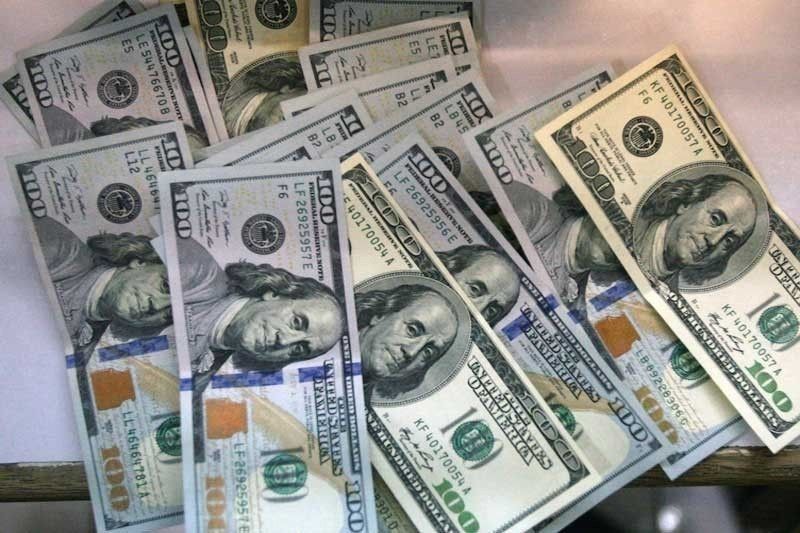BOP surplus seen at $8.1 billion

MANILA, Philippines — Strong inflows from foreign direct investments (FDIs) as well as a small contraction of remittances from overseas Filipino workers (OFWs), coupled with a sharp drop in import payments may result in record high foreign exchange buffers until next year, according to the Bangko Sentral ng Pilipinas.
BSP Governor Benjamin Diokno said the Monetary Board has approved the revised balance of payments (BOP) projections for this year as it takes into account the latest global and domestic economic developments amid the COVID-19 pandemic.
The BSP is now looking at a wider BOP surplus of $8.1 billion this year, equivalent to 2.2 percent of gross domestic product (GDP), against a backdrop of a global economy showing signs of recovery, but remaining susceptible to setbacks and a domestic economy slowly lifting its way out of containment measures.
“Overall, while the new set of emerging BOP forecasts is grounded on a narrative of gradual recovery in the near term, uncertainty over the duration, direction and extent of the impact of the COVID-19 pandemic continue to cast a shadow over future economic prospects both at home and abroad,” the BSP said.
The BOP is the difference in total values between payments into and out of the country over a period. A surplus means more foreign exchange flowed into the country from exports, OFW remittances, business process outsourcing earnings and tourism receipts.
According to the BSP, the higher projected BOP surplus this year stems from the reversal in the projected current account (CA) balance to a surplus of $6 billion or 1.6 percent of GDP instead of a deficit of $1.9 billion or -0.5 percent of GDP.
“The significant upward revision in the current account is attributed mainly to the expected narrower trade-in-goods deficit driven by the foreseen broad-based contraction in both goods exports and goods imports, with the latter declining at a faster rate due to weaker domestic demand,” the BSP said.
The CA consists of transactions in goods, services, primary income and secondary income. This account measures the net transfer of real resources between the domestic economy and the rest of the world. A surplus occurs when a country earns more on exports than what it spends for imports.
The BSP now expects merchandise imports to drop by a deeper 20 percent, while imports of services are expected to decline by a steep 19 percent.
It retained the projected decline in merchandise exports at 16 percent, but now expected a deeper 17 percent instead of 13 percent drop for services exports.
However, Diokno said the central bank is now expecting a smaller two percent contraction in OFW remittances instead of five percent. “OFWs are really altruistic,” the BSP chief said.
It is expecting a two percent increase in business process outsourcing (BPO) revenues, but is looking at a bigger 65 percent instead of 57 percent plunge in tourism receipts.
The BSP sees net FDI inflow reaching $5.6 billion this year, still smaller than the $7.7 billion recorded last year. Net foreign portfolio investments inflow or hot money is seen plunging by 68 percent to $2.4 billion this year from $7.5 billion last year.
“While uncertainty continues to weigh down on business and investor confidence, factors such as expectations of a better-than-initially-anticipated global economic performance for the year; the reopening of advanced economies with investment interest in the Philippines; the country’s investment-grade credit standing; and its expected gradual economic recovery are also seen to support foreign investment inflows for the rest of the year,” it said.
As a result, the country’s gross international reserves are expected to hit a record high of $100 billion this year in anticipation of continued national government foreign currency deposits, as well as positive revaluation adjustments in gold holdings.
For 2021, the BSP is looking at a smaller BOP surplus of $3.4 billion or 0.9 percent of GDP and smaller CA surplus of $3.1 billion or 0.8 percent of GDP amid the eight percent growth in goods imports and seven percent rise in services imports.
“The external sector outlook for 2021 reflects more favorable growth prospects as the global economy proceeds from an earlier restart of economic activity in the second half of 2020,” it said.
- Latest
- Trending






























